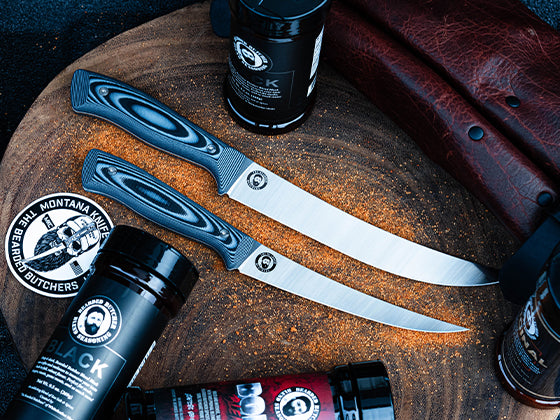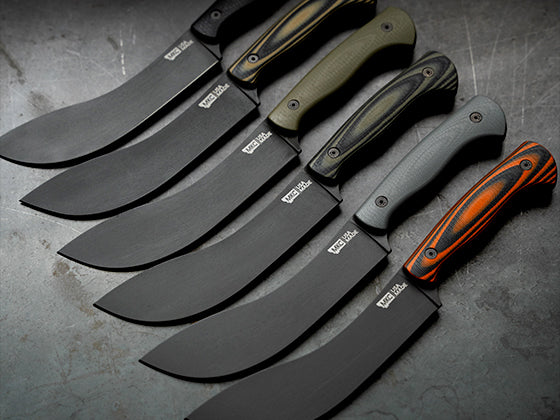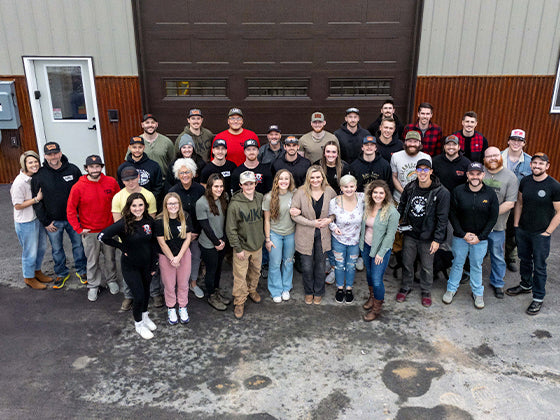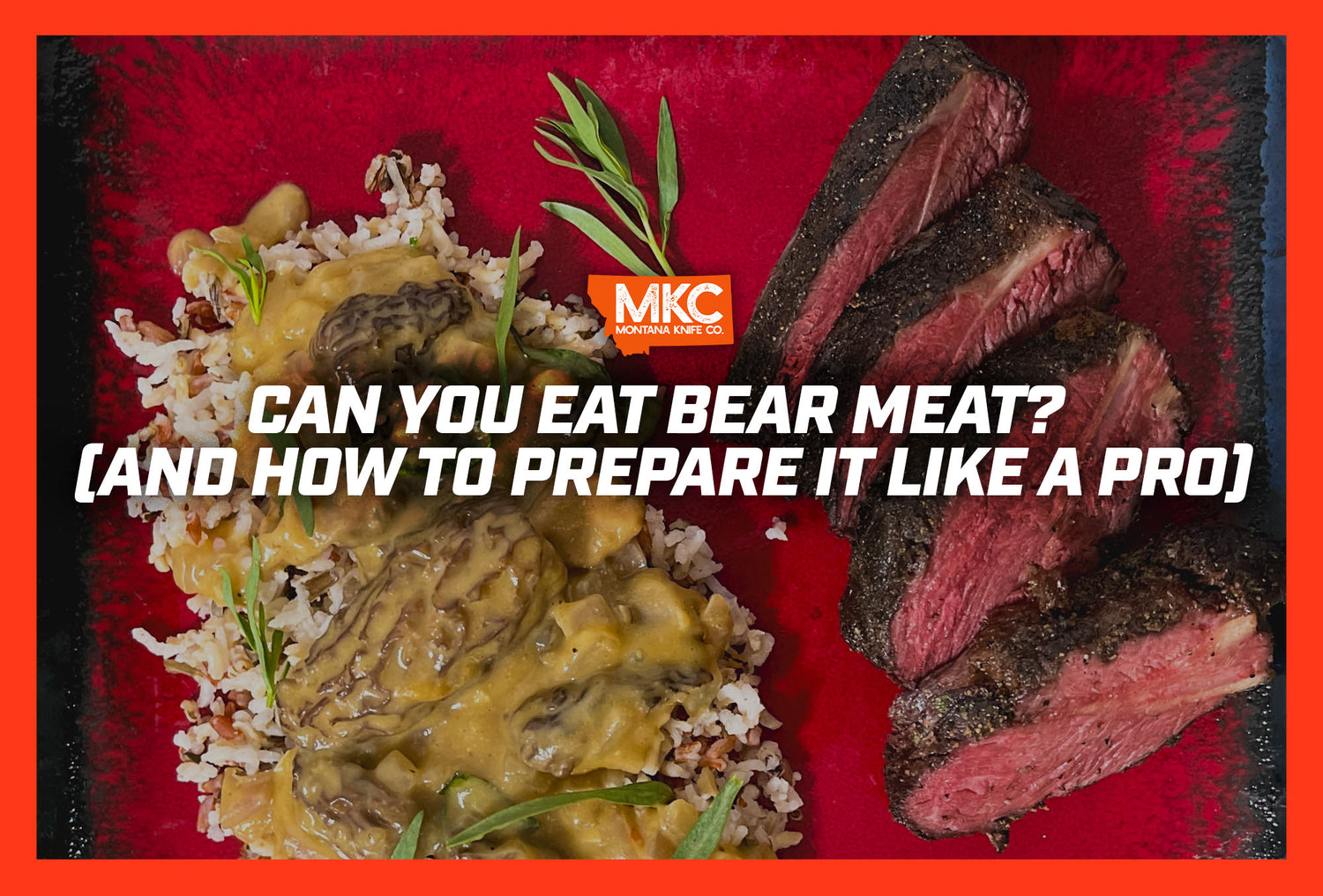Can you eat bear meat? What does bear taste like? If you’ve ever asked these questions, you’re not alone.
My name’s Brett Benton, and I’m the Customer Experience Manager here at Montana Knife Company. Bears have fascinated me my whole life, and when I moved out West in 2016, I sought to learn as much as I could about them. I’ve harvested seven bears over the last three years, and I’ve enjoyed the meat from every one.
In this post, I’ll share everything I’ve learned about bear nutrition, bear meat taste, and the factors that can affect your harvest.

Common Misconceptions About Bear Meat
While a very small percentage of hunters hunt for sport, the vast majority of hunters hunt to fill their freezers with hard-earned, organic, free-range meat. Most of us think of deer and elk when we imagine filling our freezers, but what about other large game? Do people eat bear meat?
Absolutely. Bear can be an even more versatile ingredient than deer or elk. Unfortunately, some popular misconceptions exist about bear meat that turn people away before they give it a chance.
The first misconception is that bear meat doesn’t taste good. I’ve been eating bear year-round for three years, and I’ve enjoyed every bite.
Any game animal can develop an unpleasant taste if harvested incorrectly. Bear runs hot and often carries a thick layer of insulating fat. You need to cool the meat down fast to maintain its quality and flavor.
Bears are omnivores and opportunists. While all game animals can be opportunistic, bears are a little different. The closer you hunt to urban areas, the higher your chance of harvesting a “trash bear.” A fall-harvested mountain bear that gorges itself on berries tastes much better than one that eats trash.
Another major misconception about bear meat is that you must consume it well-done. As with poultry and fish, this isn’t always the case. It does depend on the dish, but I recommend cooking bear meat sous vide style. This pasteurizes the meat but maintains the tenderness of a rare or medium-rare finish.
Is Bear Meat Edible? Handling Precautions and Proper Cooking
Before you even reach the cooking process, proper field care is the first essential step in making sure bear meat safe to consume. The meat itself must avoid contact with any part of the digestive system’s insides (stomach acid, urine, etc.) as you gut the animal. Also, cooling the meat quickly helps maintain its quality and fresh taste.
The trichinella parasite is the main reason we pasteurize bear meat, but did you know trichinella also infects pork? Cooking to a safe internal temperature is important for any meat, not just bear. Trichinella instantly dies at 144 degrees Fahrenheit, but a sustained lower temperature (such as 136 degrees for three minutes) also kills it. The lower the temperature, the longer it needs.
I recommend cooking bear meat to at least 144 degrees to be safe — which is still below “well done.” Use a thermometer to check every square inch of meat for proper pasteurization.
Is Bear Meat Good? What Does Bear Meat Taste Like?
I think bear meat is delicious, but the flavor is hard to describe because it varies depending on diet and field care. The cooking method you use changes the taste of the meat, too. A bear steak pan-fried in butter tastes different from a smoked bear sausage or a broth-heavy bear roast.
Most of the bears I’ve harvested have been fall bears that have eaten lots of wild berries. To me, these bears taste a lot like beef, but with a more robust flavor and a hint of sweetness. The fattiness of a fall bear corresponds to beef and pork more than other types of meat.
Bear Meat Nutrition: How Does It Compare?
Bear meat is an excellent source of protein and iron, and it’s lower in fat and saturated fat than beef. Here’s a detailed breakdown of bear meat compared to other species.
|
Nutrition |
Bear |
Beef |
Chicken Breast |
|
Calories per 100 grams |
155 |
250 |
165 |
|
Protein per 100 grams |
20.1 grams |
26.0 grams |
31 grams |
|
Fat per 100 grams |
8.3 grams |
10.0 grams |
3.6 grams |
|
Saturated fat per 100 grams |
3.3 grams |
6.0 grams |
1 gram |
|
Cholesterol per 100 grams |
83 milligrams |
86 milligrams |
85 milligrams |
|
Iron per 100 grams |
7.2 milligrams |
3.5 milligrams |
1.07 milligrams |
|
Zinc per 100 grams |
4.9 milligrams |
3.5 milligrams |
0.68 milligrams |
|
Vitamin A per 100 grams |
100 micrograms |
11 micrograms |
0 micrograms |
|
Vitamin D per 100 grams |
0 micrograms |
0 micrograms |
0 micrograms |
|
Vitamin B12 per 100 grams |
3.2 micrograms |
5.9 micrograms |
0.3 micrograms |
Best Ways to Prepare Bear Meat
As with any animal, the way you prepare bear meat depends on the cut. Since it’s similar to beef and pork, you can substitute bear meat in any dish where you’d use those meats. Like pork, bear does well in a smoker, but it also does well in roasts, as steaks, and even ground into sausages or burgers.
Ground bear meat lends itself well to Asian, Mexican, and Italian-style dishes. I like to make ground bear meatballs to pair with white rice and ground bear meat sauce to pair with spaghetti. You can also make burritos with bear skirt steaks.
As born-and-raised Southerners, my wife and I love bear sausage links in a good gumbo, especially with a little bear fat in the roux. You can even use the bear’s neck bones to make collard greens richer, just like my grandmother used to do with pork neck bones.

Ultimately, my favorite way to eat bear is as a sous vide steak. We process our own steaks, and we always leave a thin layer of fat on the meat to keep things tender and flavorful. Sous vide the steak for three to five hours at 140–144 degrees Fahrenheit (the longer you cook it, the more tender it will be). Take it out, season it, and reverse-sear.
In my humble opinion, that’s the best way to enjoy the rich, robust, and unique flavors bear meat has to offer.
by Brett Benton, Customer Experience Manager at Montana Knife Company, Vice President & Co-Founder of The Campfire Fund







































